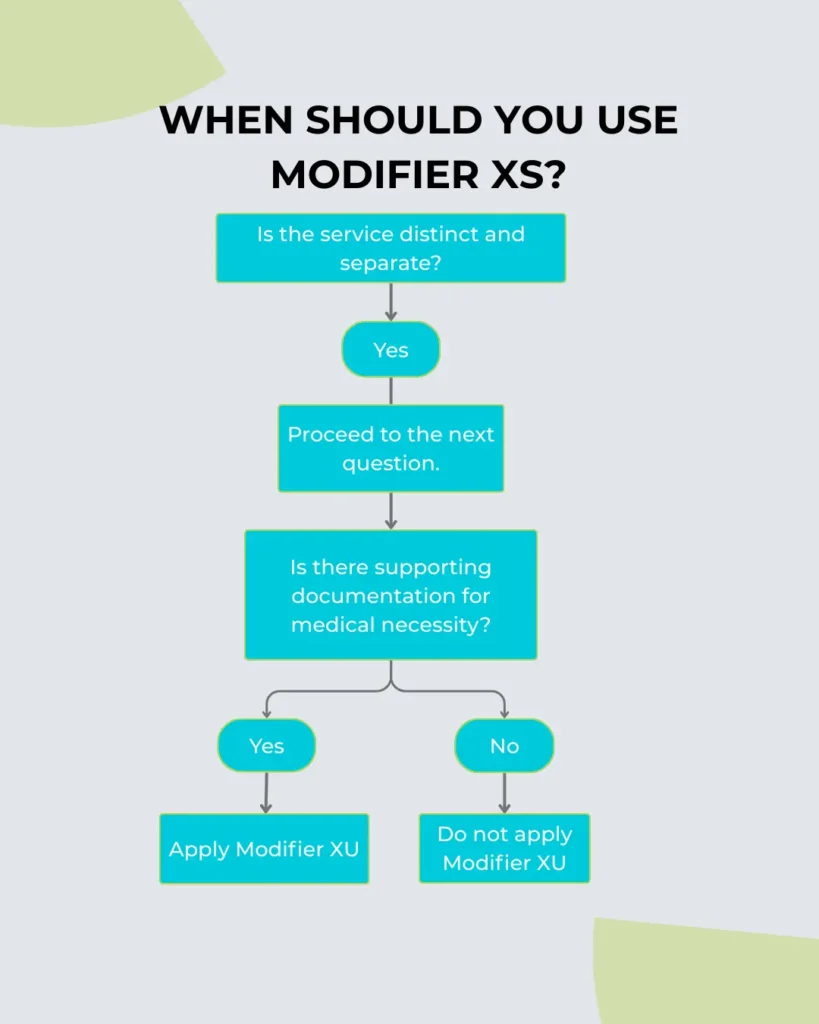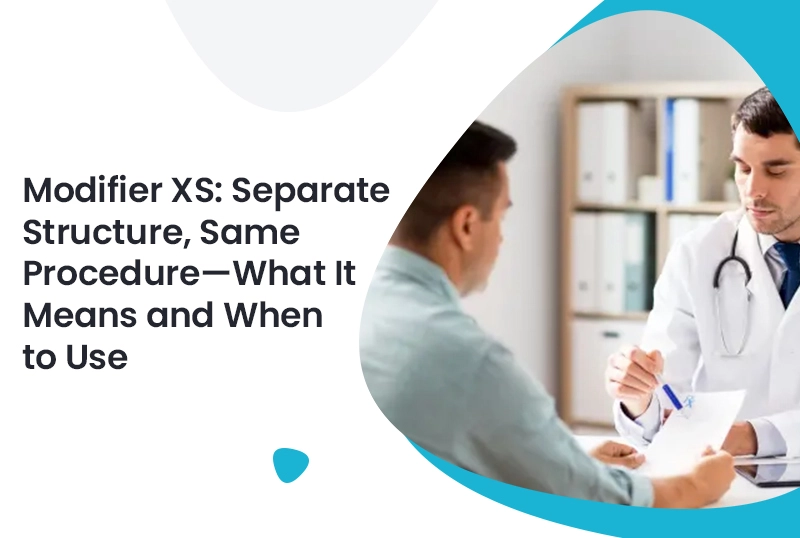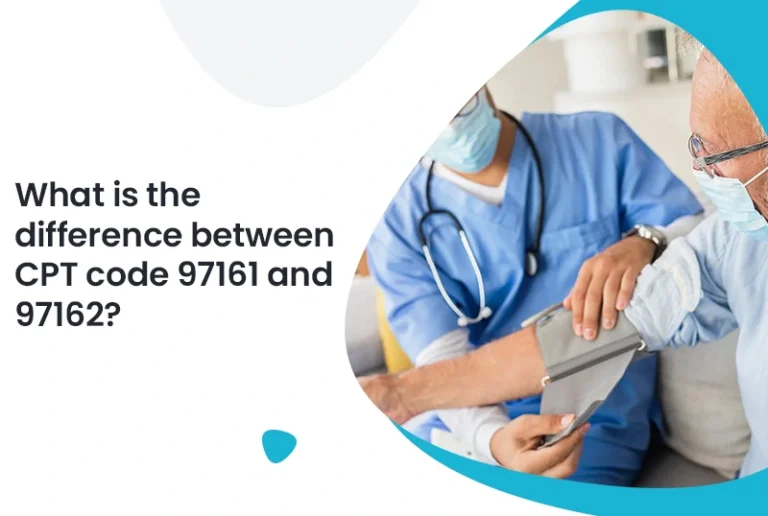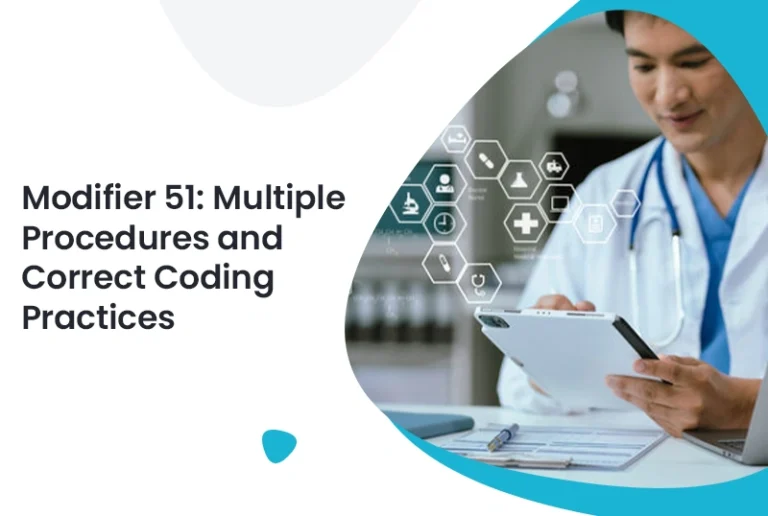Modifier XS plays an important role in this process. It signifies that the same procedure was carried out on a distinct anatomical structure, helping differentiate services performed on separate parts of the body. Proper use of this coding technique ensures accurate reimbursement and minimizes the risk of claim rejections. We’ll provide helpful tips on how it interacts with other codes and how partnering with billing services medical professionals can help you navigate the complexities of medical coding.
What is Modifier XS?
It is used to indicate that a procedure has been performed on separate structures, even if the procedure is essentially the same. It’s designed to clarify that different anatomical sites or structures were involved in the procedure, which may otherwise be considered redundant if the procedure were performed on the same structure.
For example, if a surgeon performs a procedure on both the left and right hands, the procedure is identical but involves two separate structures. It helps distinguish between two identical procedures performed on different anatomical locations.
When to Use
Understanding when to use modifier XS is crucial for accurate coding. Here are the scenarios where it should be used:

Valid Uses of Modifier XS:
- Same procedure, different structures: When a procedure is performed on separate structures (e.g., right and left hands, both kidneys), it should be applied to clarify that these are separate services.
- Different anatomical locations: If the same procedure is done on different body parts that are considered distinct, it helps to avoid redundancy.
- Multiple procedures on the same day: When a procedure is performed multiple times on different areas of the body, applying it ensures that both services are reimbursed appropriately.
Invalid Uses of Modifier XS:
- Same procedure, same structure: If the procedure is performed on the same anatomical structure, it should not be applied. It is reserved for separate structures only.
- Bundled services: If services are bundled together and are part of a single procedure code, it is unnecessary and would lead to a claim denial.
The Role of Documentation in Modifier XS Usage
Proper documentation is critical when using modifier XS to ensure that the services are appropriately identified as separate. Here’s what you need to include in your documentation:
- Anatomical details: Document the specific anatomical structures involved in the procedure, clearly noting that they are distinct and separate.
- Procedure description: Include a description of the procedure performed on each separate structure, demonstrating why both procedures are necessary.
- Time and resource differentiation: Indicate that both procedures required different resources, time, and effort, justifying why they should be reimbursed separately.
How Modifier XS Works with Other Modifiers
It can be used alongside other modifiers to clarify the nature of the procedures being performed. For example:
- Modifier 51 (Multiple Procedures): This modifier indicates that multiple procedures were performed. When paired with modifier XS, it can specify that these multiple procedures were performed on different anatomical sites.
- Modifier 59 (Distinct Procedural Service): If a procedure is distinct from others but related in nature, modifier 59 is used. When combined with modifier XS, it reinforces that the services are distinct yet still related.
Understanding how it works with these and other modifiers can improve coding accuracy and ensure appropriate reimbursement.
The Financial Impact of Modifier XS
Using it correctly can have a substantial financial benefit for healthcare providers. When applied accurately, it supports clear medical billing coding practices that help secure appropriate reimbursement.
- Separate services: That procedures were performed on different anatomical structures. This distinction ensures each service is billed and reimbursed separately, rather than being mistakenly bundled into one payment.
- Reduced claim rejections: Proper application of modifier XS significantly reduces the chance of claim denials caused by redundancy concerns. It signals that the services were distinct and deserve individual compensation, leading to better reimbursement outcomes.
For small practices, integrating precise medical billing coding with accurate use of modifier XS helps avoid revenue loss and guarantees fair payment for every service rendered.
Learn more about: How To Choose the Best Medical Billing Service Provider
Best Practices for Using Modifier XS
To avoid redundancy and ensure that It is applied correctly, follow these best practices:
- Ensure separate structures: Only apply modifier XS when the procedure is performed on distinct anatomical sites.
- Review payer guidelines: Different payers may have different rules regarding modifier XS. Always review payer-specific policies to ensure compliance.
- Maintain thorough documentation: Proper documentation is essential. Include all relevant details to justify the use of modifier XS.
- Pair with appropriate modifiers: Use modifier XS alongside other relevant modifiers, such as modifier 51 or modifier 59, to clarify the distinct nature of services.
Conclusion
Modifier XS is an essential tool in medical billing, ensuring that separate services performed on different structures are properly reimbursed. This not only helps prevent claim rejections but also ensures fair reimbursement for the services provided.
If you’re looking for assistance with revenue cycle management services , partnering with professionals who specialize in medical billing coding can help streamline your processes and maximize reimbursement.
FAQs About Modifier XS
Q1. What is modifier XS used for in medical billing?
A: It is used to indicate that the procedure performed on a separate anatomical structure should be billed separately, even if the procedure is identical to another performed on a different structure.
Q2. How do I document the use of modifier XS?
A: You should document the anatomical structures involved, the procedures performed, and how these services were distinct and required separate billing.
Q3. Can modifier XS be used with other modifiers?
A: Yes, It is often used alongside other modifiers like modifier 51 (Multiple Procedures) and modifier 59 (Distinct Procedural Service) to provide additional clarity.
Q4. Will modifier XS always result in increased reimbursement?
A: Yes, It ensures that services performed on separate structures are reimbursed independently, increasing the overall reimbursement for the procedures.
Q5. Can I use modifier XS for procedures performed on the same structure?
A: No, It should only be used for procedures performed on separate anatomical structures. It is not applicable for procedures on the same structure.






